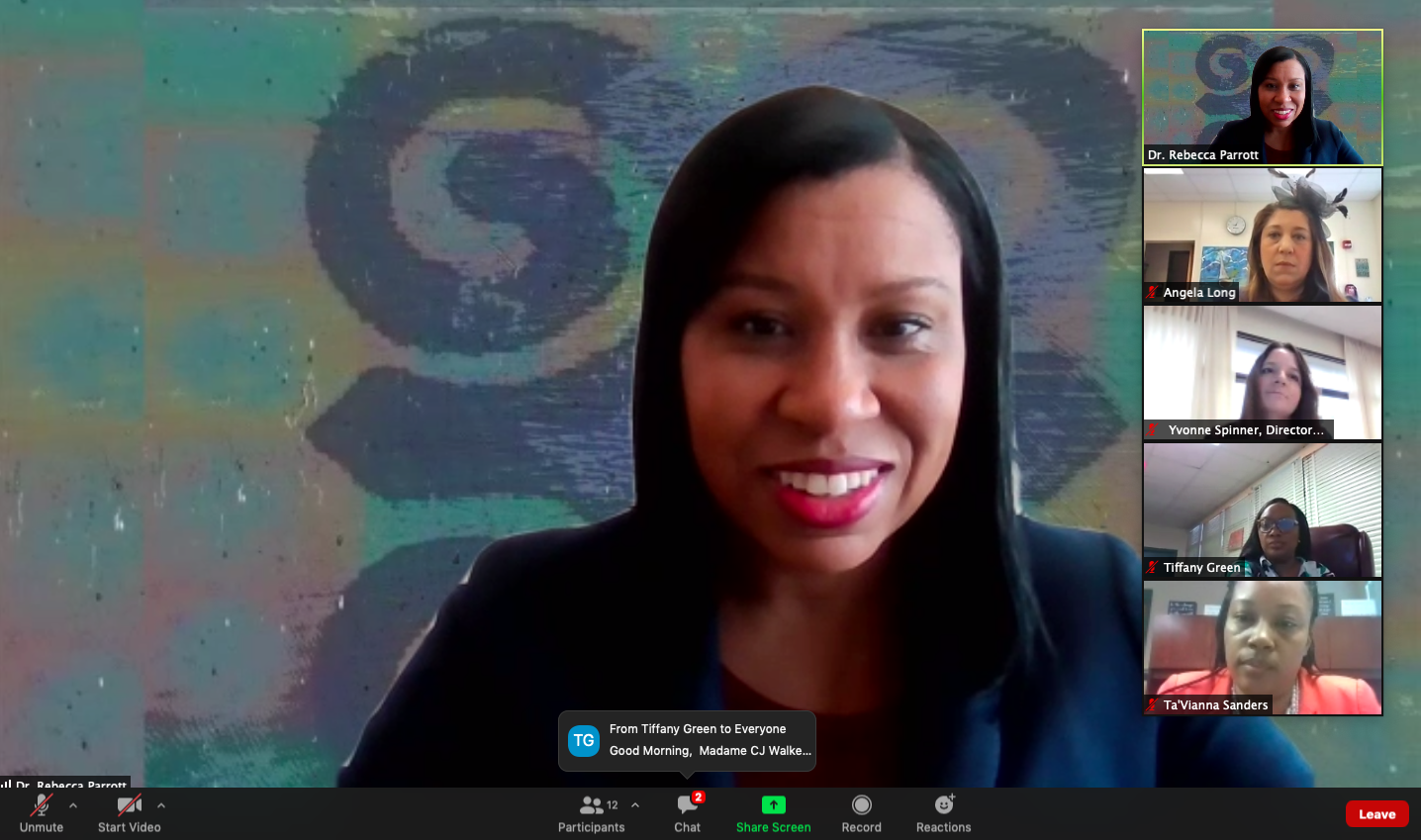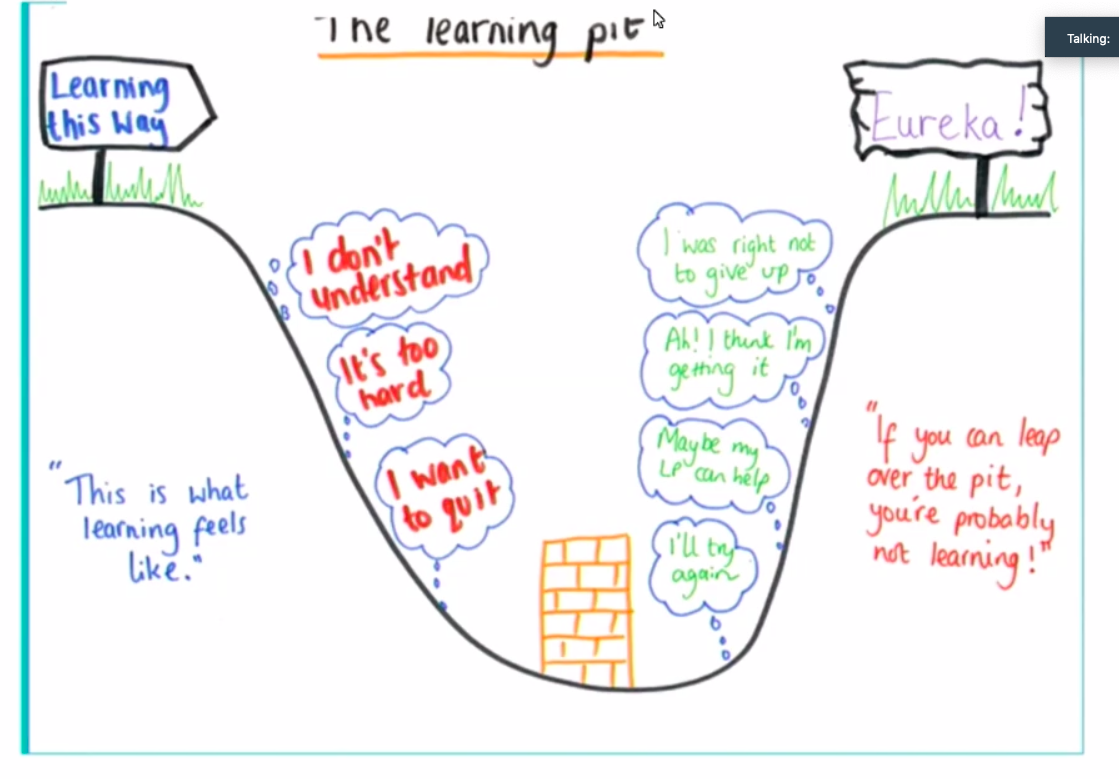Inside the School Leadership Initiative: Helping students climb out of the ‘pit’
JPEF's School Leadership Initiative helps build the leadership skills of Title I elementary school principals.
3/18/2021

Have you ever felt anxious about learning something new?
Many students feel it regularly. When they’re about to dive into a new book, tackle a new math concept or start learning a new language, it’s common to feel nervous.
So how can teachers support them to have the self-confidence they need to dive in?
This month, principals across Duval County joined a virtual learning session to talk about – “the learning pit” – a metaphor for the learning journey – and how teachers can support students to go in bravely with an academic mindset.

The learning pit is the process of learning something new – starting with the jitters of not knowing, the depths of frustration and confusion in the middle, and then the boost in confidence that comes from coming out the other side.
What makes it even more challenging is when students doubt their abilities because they have struggled to learn in the past – and need another shot and more support to build that self-confidence.
There’s a cultural piece, as well. Research has shown that stereotype threat, a feeling of anxiety due to negative stereotypes about their academic abilities, can cause students to feel less confident. Oftentimes, students of color are educated in school systems where there is a greater emphasis placed on grades than student effort. But students need to develop a “growth mindset” -- the belief that they can grow their brain power and the confidence that effort will lead to greater skill and greater success.
That’s why Dr. Rebecca Parrott, JPEF School Leadership Consultant, chose to focus on culturally responsive teaching for the March learning session of our School Leadership Initiative. The learning session drew on the work of Dr. Zaretta Hammond, the author of Culturally Responsive Teaching and the Brain. The text is based on 20 years of equity-focused reform work with schools. It highlights the neuroscience that is at the core of culturally responsive teaching, and focuses on restoring intellectual confidence and capacity of marginalized students. In the session, about eight principals spent two hours learning about these concepts and supporting each other.
A key practice in Culturally Responsive Teaching is establishing open lines of communication. School staff cannot adequately respond to the needs of students and families if they don’t know what’s working, what’s needed, and the overall wellness of the students they serve.
One practice Dr. Parrott shared to help with this is a digital comment box, something as simple as a Google form that allows families to ask questions and provide suggestions to the school staff anonymously.
In another example, Tiffany Green, Principal of Woodland Acres Elementary, said she’s found it’s important to create space for her teachers to feel connected and heard during team meetings before they dive into their work.
Recently, they took time out of a meeting to just check in. She was reading the room and saw just how tired her teachers were. So she asked – how are they doing? What are they struggling with? What’s going well?
“It created that moment to just be human with each other,” Green said. “Sometimes we just need to take a step back and take a breather.”
Ironically, it’s those kinds of moments in schools that bolster teachers and students’ motivation to dig into the hard work once again – to dive into the pit.
“That’s great modeling of how teachers can also read the room,” Dr. Parrott said. “Students may need a moment to share how they’re doing. That’s part of cultural responsiveness. How can we respond to them if we don’t know what their needs are?”